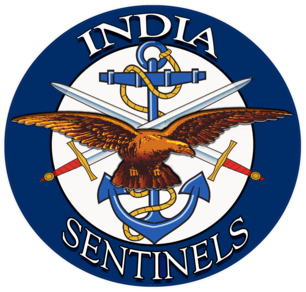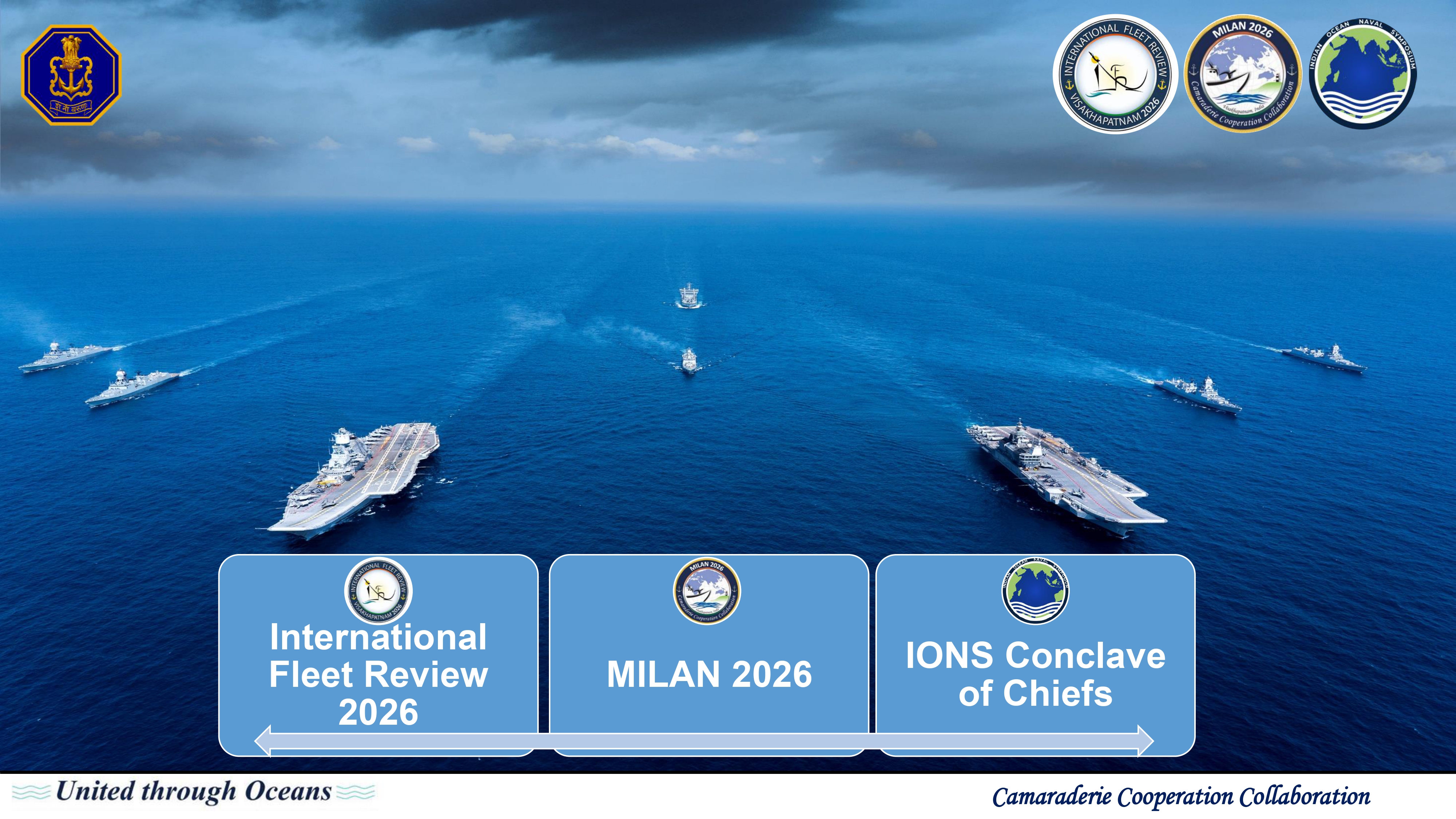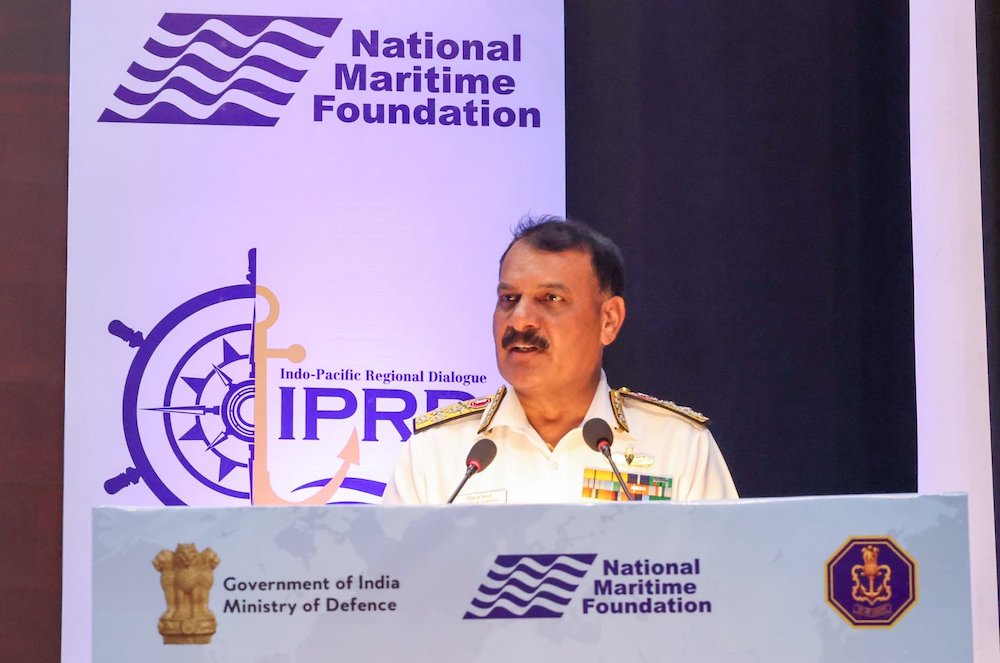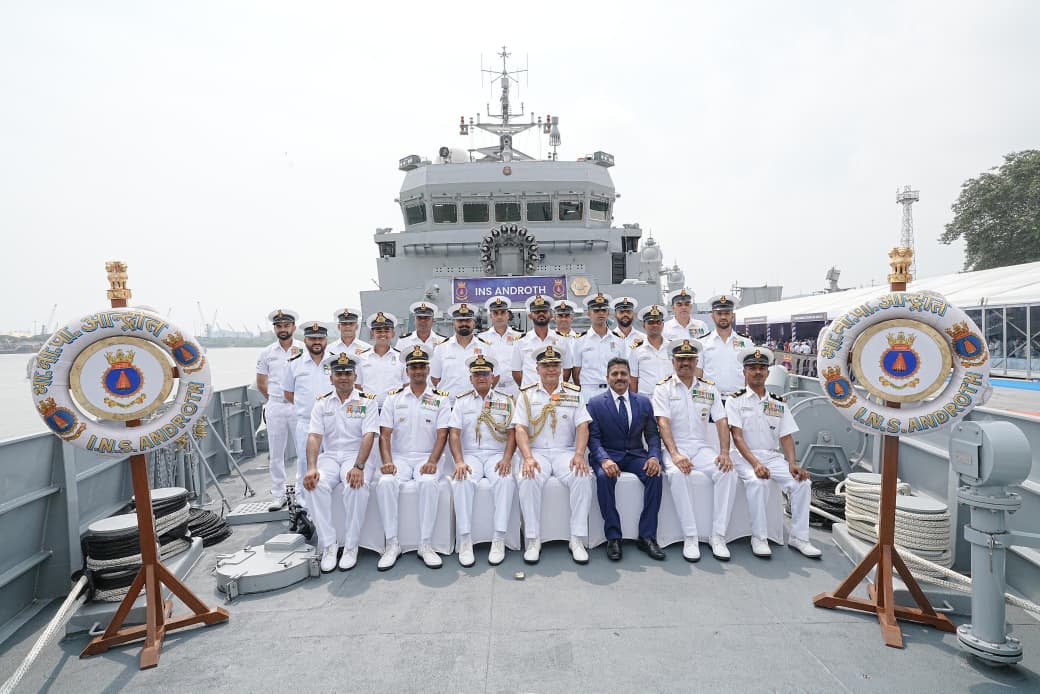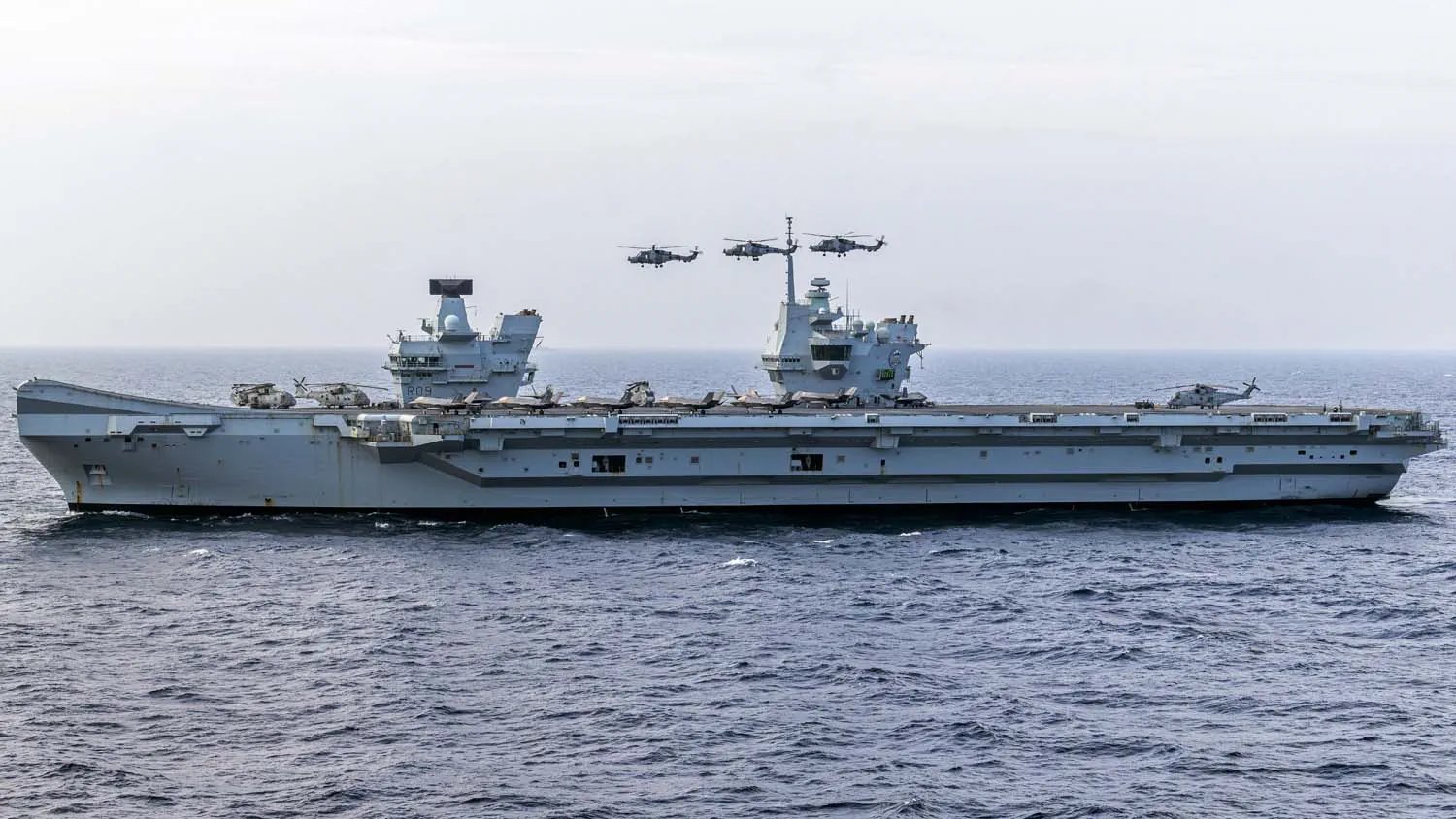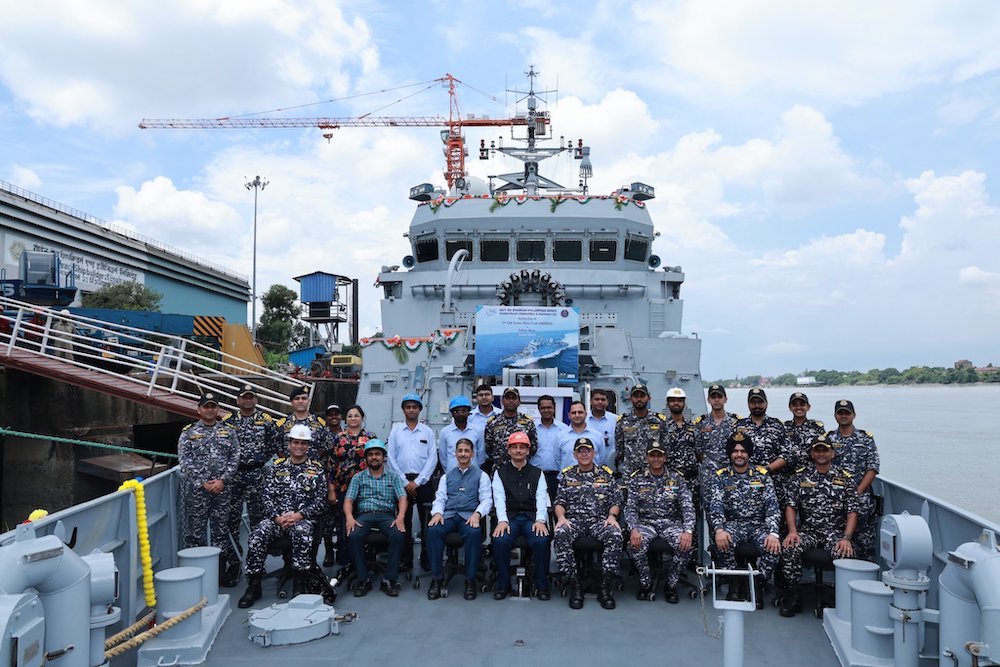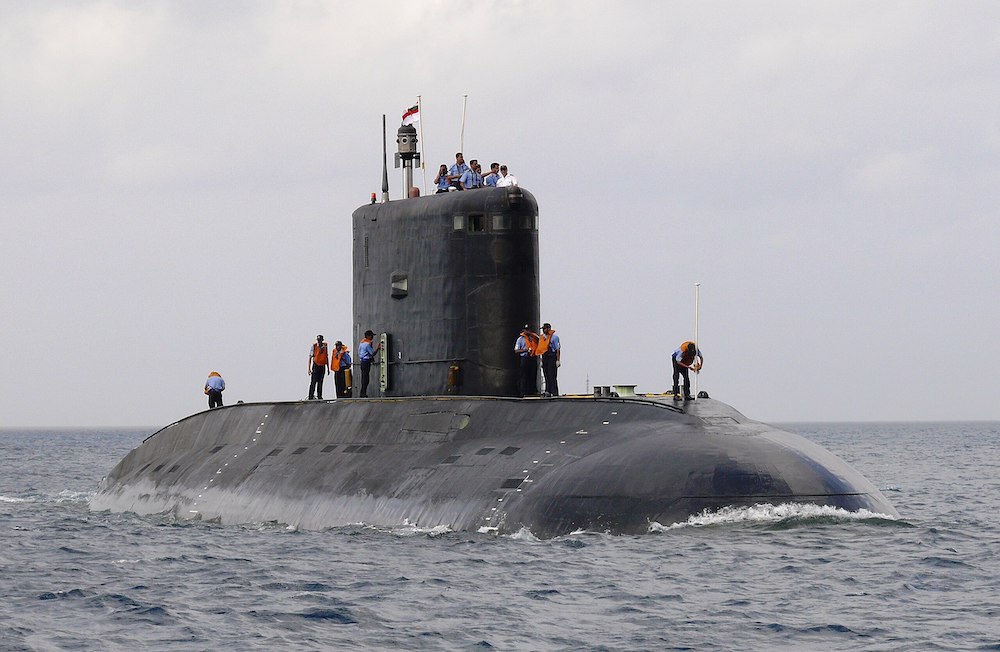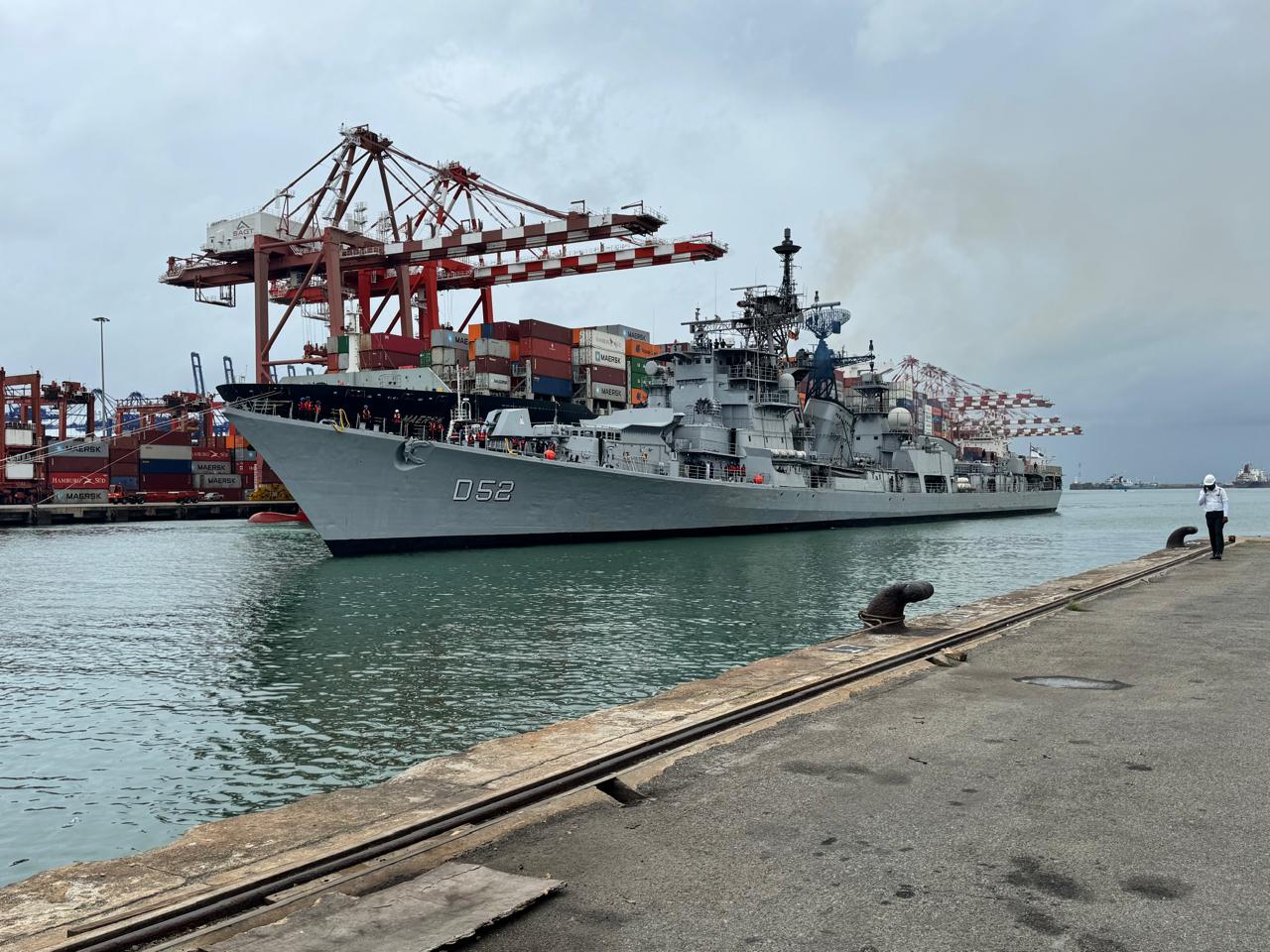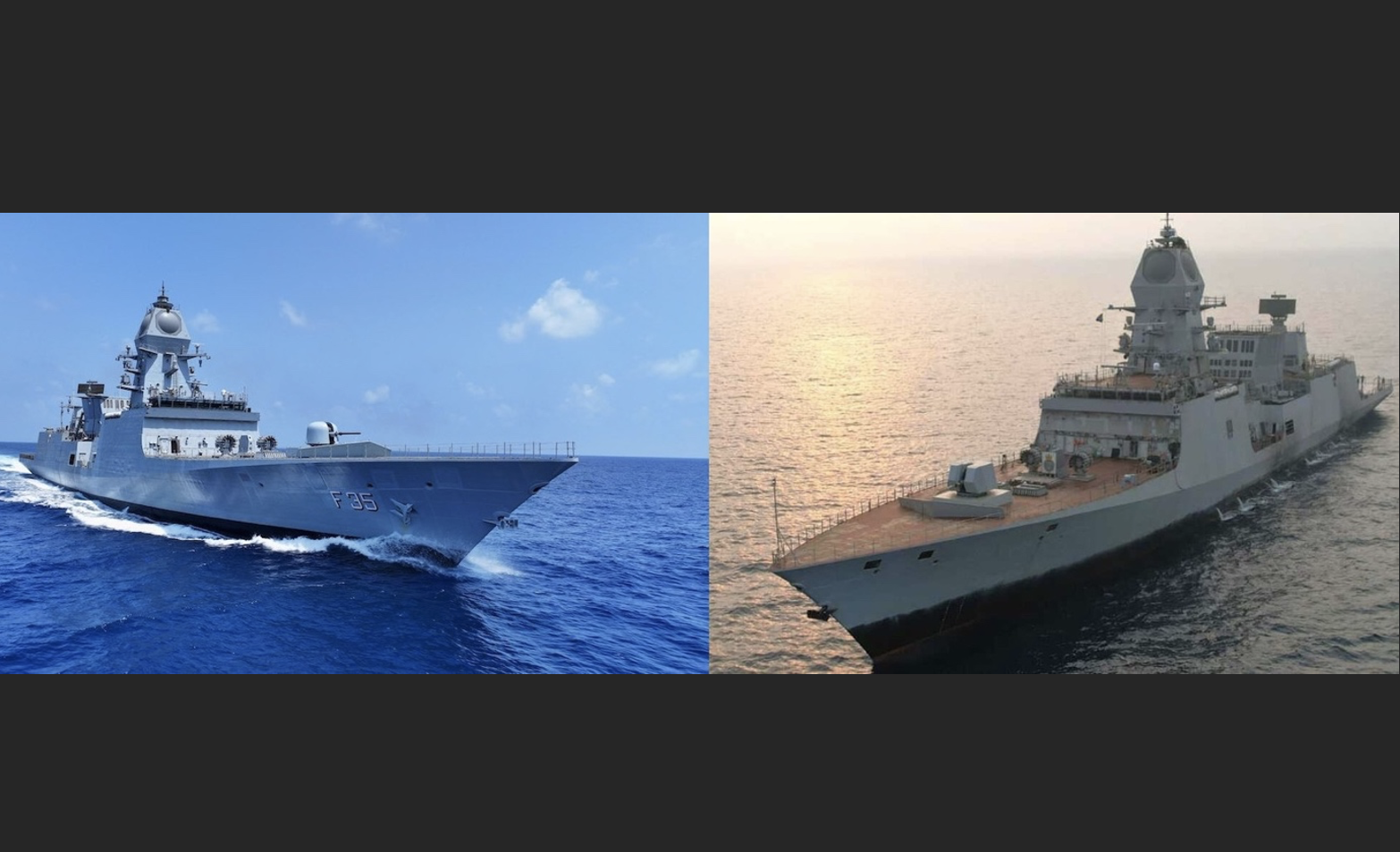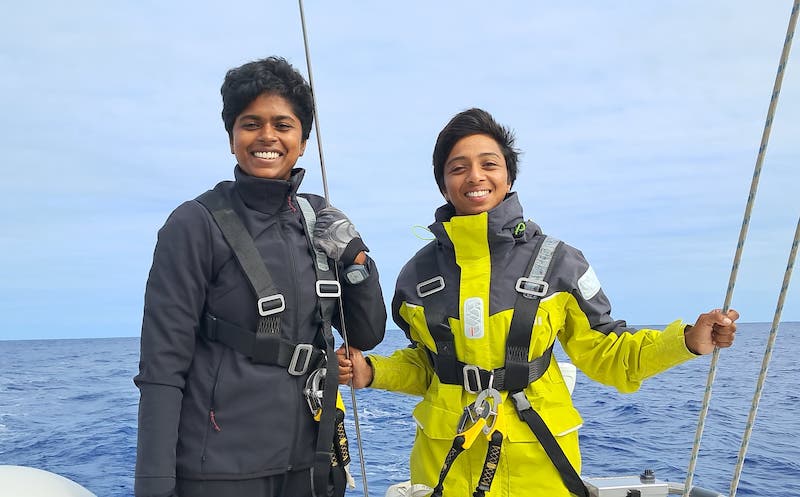 Lt Cdr Dilna K (L) and Lt Cdr Roopa Alagirisamy on INSV Tarini. (File photo/Indian Navy)
Lt Cdr Dilna K (L) and Lt Cdr Roopa Alagirisamy on INSV Tarini. (File photo/Indian Navy)
Vasco da Gama/New Delhi: Lieutenant Commander Dilna K and Lieutenant Commander Roopa Alagirisamy have etched their names in maritime history after successfully completing their epic odyssey – Navika Sagar Parikrama II – covering 47,041 kilometres. Their triumphant return to Goa on Thursday marked not only a personal achievement but a milestone moment for India’s naval prowess and women’s empowerment in the armed forces.
Also, in a remarkable confluence of milestones within 24 hours, their homecoming coincided with another watershed moment for women in India's armed forces – the passing out of the first batch of 17 women cadets from the National Defence Academy at Khadakwasla, Pune, on Friday. The last two days thus became a double celebration of breaking barriers, as seasoned officers returned from conquering the world’s oceans while fresh cadets prepared to script their own chapters in military history.
Triumphant Return and Grand Reception
The Indian Naval Sailing Vessel (INSV) Tarini emerged on the Goan horizon as a grey sky merged with the sea, creating a dramatic backdrop for one of the most significant homecomings in Indian naval history. The vessel’s arrival at Mormugao Port in Vasco da Gama was met with unprecedented fanfare, with senior Indian Navy officials assembled on the long pier extending into the Zuari river to welcome their flagship sailing vessel.
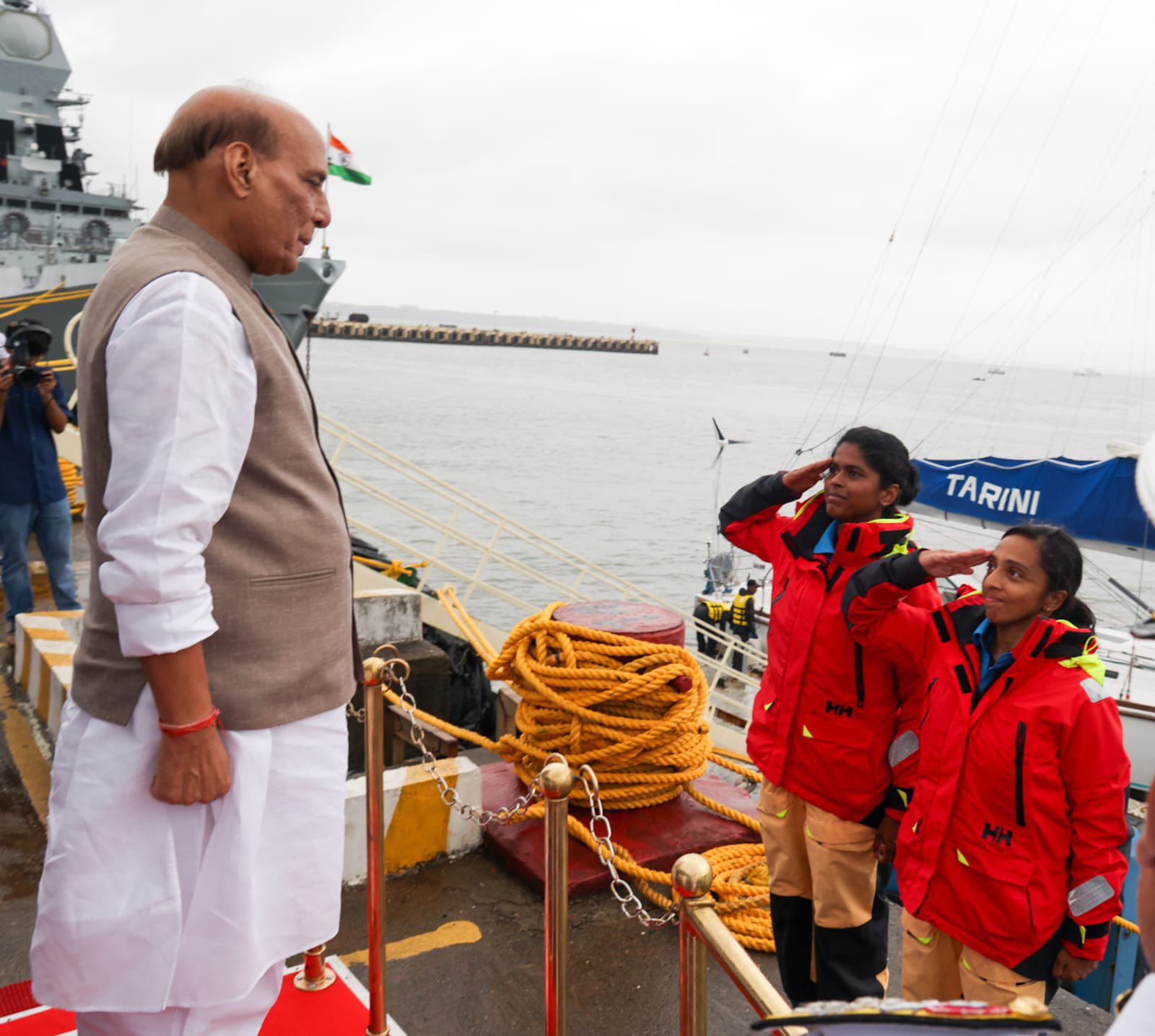 Lt Cdr Roopa Alagirisamy (R) and Lt Cdr Dilna K saluting the defence minister, Rajnath Singh, on their arrival at Vasco da Gama, Goa. (Photo: Indian Navy)
Lt Cdr Roopa Alagirisamy (R) and Lt Cdr Dilna K saluting the defence minister, Rajnath Singh, on their arrival at Vasco da Gama, Goa. (Photo: Indian Navy)
The magnitude of the achievement was underscored by the presence of the defence minister, Rajnath Singh, who personally presided over the flag-in ceremony, formally marking the culmination of the global circumnavigation. Standing on the pier to receive the two outstanding naval officers, Singh acknowledged the historic nature of their accomplishment, declaring that “the duo has made the nation proud by waving the tricolour across the globe.”
In his address as chief guest, the defence minister emphasized the national significance of their voyage, stating, “This miraculous voyage is not only your achievement – it is ours as a nation.” His words captured the sentiment of pride that resonated throughout the naval community and the broader Indian public.
Singh also took care to acknowledge the many men and women who had enabled the mission, recognizing the collective effort behind this individual triumph.
Making History
The homecoming ceremony represented more than just the conclusion of a sailing expedition. It marked the achievement of Lieutenant Commander Dilna K, from Kozhikode in Kerala, and Lieutenant Commander Roopa Alagirisamy, a native of Puducherry, becoming only the ninth and 10th Indians to have circumnavigated the globe.
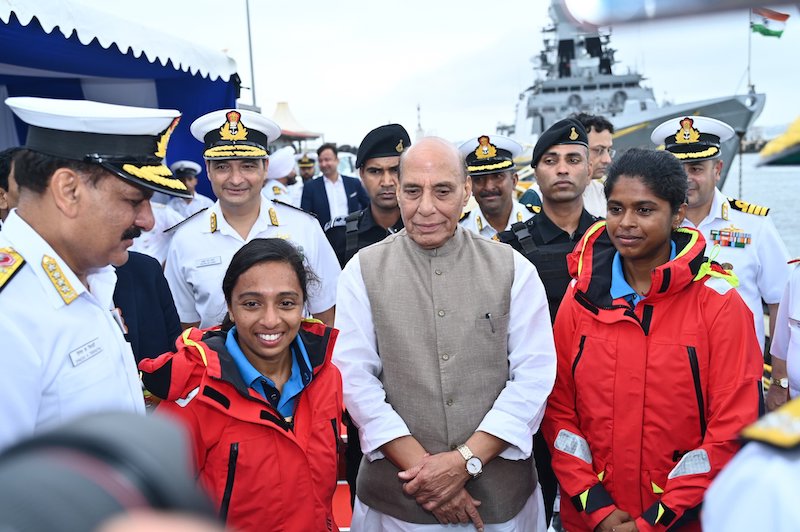 Rajnath Singh with Lt Cdr Dilna K on his right and Lt Cdr Roopa Alagirisamy on his left, while Indian Navy chief Adm Dinesh Kumar Tripathi (L) looks on. (Photo: Indian Navy)
Rajnath Singh with Lt Cdr Dilna K on his right and Lt Cdr Roopa Alagirisamy on his left, while Indian Navy chief Adm Dinesh Kumar Tripathi (L) looks on. (Photo: Indian Navy)
Their distinction as the first all-woman pair to accomplish this feat in double-handed mode added special significance to an already remarkable achievement.
The Epic Voyage: Planning and Execution
Origins and Departure
The Navika Sagar Parikrama II expedition began with considerable ceremony on October 2, 2024, when Admiral Dinesh Kumar Tripathi, chief of the naval staff, flagged off INSV Tarini from the Naval Ocean Sailing Node in Goa. This ambitious mission was designed to cover more than 23,400 nautical miles, approximately 43,300 kilometres, over eight months, with a scheduled return to Goa in May 2025.
The voyage represented a continuation of India’s maritime exploration heritage, building upon the first Navika Sagar Parikrama expedition that featured an all-women crew in 2018. However, the 2024-25 expedition distinguished itself by featuring just two officers managing the entire circumnavigation in what is known as double-handed mode, significantly increasing the complexity and challenge of the undertaking.
Strategic Port Calls
The expedition’s route was carefully planned to include four major international stopovers, each serving both practical and diplomatic purposes. The first significant milestone came on November 9, 2024, when INSV Tarini reached Fremantle, Australia, after a gruelling 39-day journey covering over 4,900 nautical miles from Goa.
The vessel’s arrival was celebrated with considerable fanfare, including a warm reception attended by Indian dignitaries and Australian officials, demonstrating the diplomatic value of the mission.
The crew then proceeded to Lyttelton, New Zealand, for their second international port call, before continuing to Port Stanley in the Falkland Islands, a territory of the United Kingdom. Each stopover provided opportunities for maintenance, resupply, and cultural exchange, while also showcasing India’s maritime capabilities on the global stage.
The fourth and final international port call occurred in Cape Town, South Africa, where INSV Tarini was welcomed by the consul general of India, Ruby Jaspreet, Rear Admiral Lisa Hendricks, chief of staff of the South African Navy Fleet, and Captain Atul Sapahia, the defence advisor of India at Pretoria. The South African Naval Band performed a welcoming ceremony, highlighting the international respect garnered by the expedition.
From Cape Town, the vessel was flagged off on April 15, 2025, for its final leg back to Goa, with expectations of arrival by the end of May. This final segment completed the global circumnavigation, bringing the total distance covered to over 25,400 nautical miles.
Confronting Nature’s Fury
The voyage was far from a leisurely sail around the world. The crew encountered some of the most challenging maritime conditions imaginable, including rough seas, extremely cold temperatures, and stormy weather that tested both their sailing skills and resolve.
The passage witnessed winds in excess of 50 knots (93 kilometres per hour) and waves reaching heights of up to seven metres (23 feet). During their journey to Fremantle alone, the officers faced diverse weather conditions ranging from calm seas to severe weather with winds up to 40 knots and wave heights reaching dangerous sea states.
Despite these harsh conditions, the crew remained resilient and maintained high spirits throughout the voyage, demonstrating the quality of their training and preparation.
The Officers: Backgrounds and Preparation
Lieutenant Commander Dilna K
Lt Cdr Dilna K’s journey to maritime excellence was forged through personal tragedy and determination. Having lost her Army father in 2015, she made a promise to represent India, a commitment she has now fulfilled in spectacular fashion.
Her sister Deepthi recalled Dilna’s dedication to excellence: “She found her passion for rifle shooting in NCC and became a national shooter,” noting how she would travel from Kozhikode to Idukki almost every two weeks to train, often compromising on equipment and coaching.
Dilna’s physical preparation was equally remarkable. She would pull out 100 buckets of water from their well daily to build muscle strength and climbed coconut trees to develop agility, despite being afraid of heights. This dedication to overcoming personal limitations would prove crucial during the demanding circumnavigation.
Lieutenant Commander Roopa Alagirisamy
Lt Cdr Roopa Alagirisamy’s path to naval service was equally distinctive. Trained as an aeronautical engineer, she previously worked at the National Aerospace Laboratories in Bengaluru before joining the Navy after multiple attempts at the Services Selection Board.
Her sister, Durga Monica, explained Roopa’s motivation: “She didn’t want a regular job. She wanted to do something different – inspect weapons, sail, surf, jump from heights.”
Both officers were commissioned in 2017, with Alagirisamy serving at the Naval Armament Inspection division in Mumbai, where she was first introduced to sailing, progressing from dinghies to competitive ocean sailing. The transition from aerospace engineering to maritime navigation exemplified the diverse skill sets that modern naval officers bring to their service.
INSV Tarini: The Record-breaking Boat
The Indian Naval Sailing Vessel Tarini itself represents a remarkable achievement in indigenous shipbuilding capability. This 56-foot sailing vessel was indigenously built and inducted into the Indian Navy in 2018.
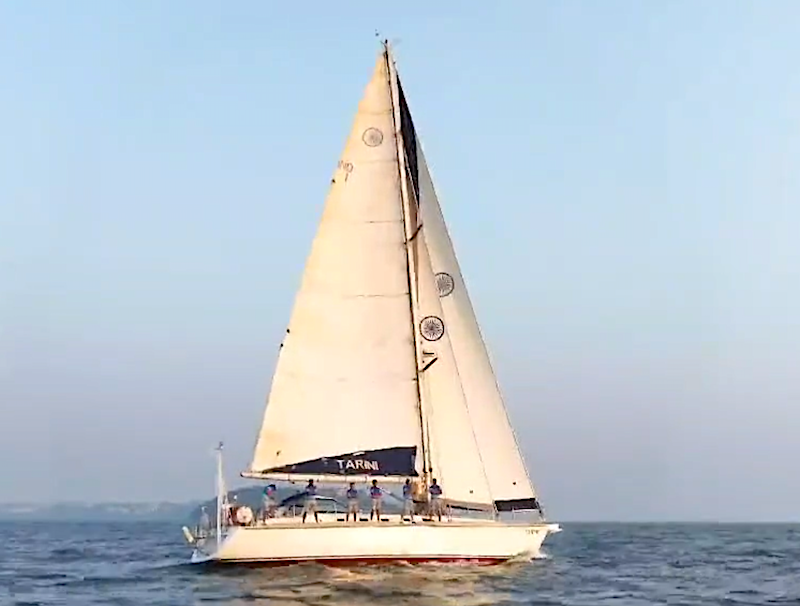 INSV Tarini. (File photo)
INSV Tarini. (File photo)
The vessel has participated in numerous expeditions since its induction, including a transoceanic and intercontinental voyage covering 17,000 miles, which also included Lt Cdr Dilna A and Roopa Alagirisamy. Therefore, it has been able to build a formidable reputation for reliability and seaworthiness that proved crucial during the demanding circumnavigation. I
ts design and construction demonstrate India’s growing capabilities in specialized maritime vessel development, contributing to national self-reliance in defence manufacturing.
Broader Significance and Impact
Women’s Empowerment
The Navika Sagar Parikrama II expedition serves multiple strategic purposes beyond the achievement of circumnavigation itself. The mission actively promotes women empowerment in the Indian armed forces and is expected to motivate many young women to join the services and the Indian Navy in particular.
This aspect of the voyage aligns with India’s broader commitment to gender equality and women’s participation in traditionally male-dominated fields.
Diplomatic Soft Power
From a diplomatic perspective, the expedition has enhanced India’s soft power projection globally. During their stopover in Cape Town, Tarini became a floating embassy, hosting local leaders, diplomats, cricketer Jonty Rhodes, and solo sailor Kirsten Neuschäfer.
These interactions, along with their engagement with naval cadets and the Indian diaspora, have championed gender equality, ocean sailing, and cultural exchange.
Maritime Capabilities
The successful completion of this circumnavigation also reinforces India’s growing maritime capabilities and commitment to ocean exploration. As a nation with extensive coastlines and significant maritime interests, India’s demonstration of advanced sailing capabilities sends a strong message about its naval competence and technological advancement.
The achievement of Lieutenant Commander Dilna K and Lieutenant Commander Roopa Alagirisamy stands as a beacon of inspiration for future generations of Indian women, proving that with determination, proper training, and institutional support, even the most challenging goals can be achieved. Their successful circumnavigation adds another golden chapter to India’s naval history and demonstrates the country’s commitment to excellence in maritime operations.
